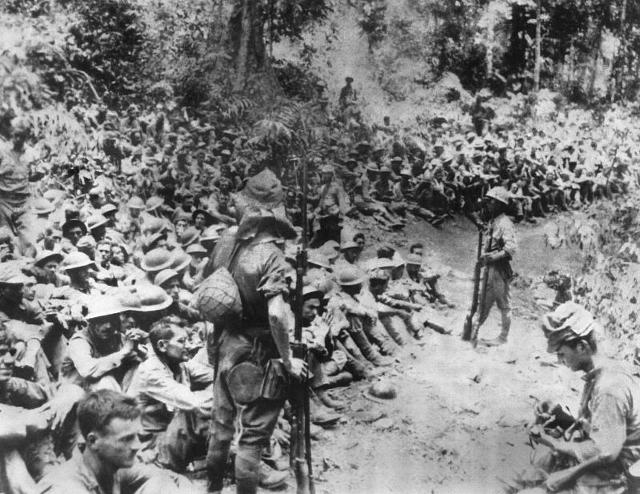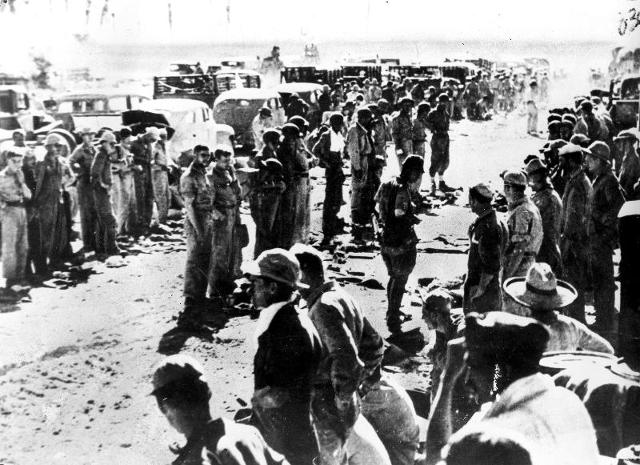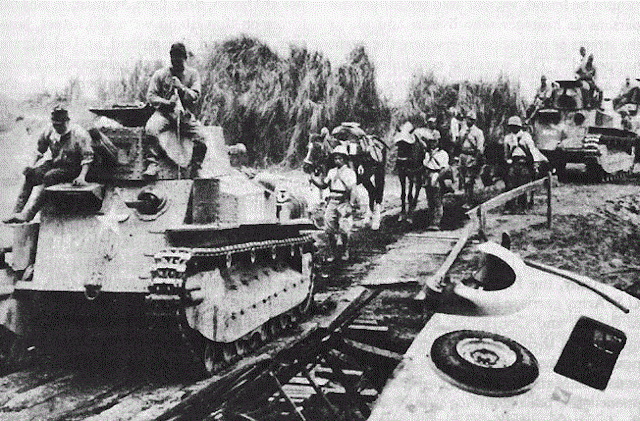After the surprise attack on the US fleet at Pearl Harbor on December 7, 1941, the Japanese turned its focus to elsewhere, sweeping through the Pacific.
In early January, Japanese forces landed in the Philippines, US territory where tens of thousands of American and Filipino soldiers were stationed.
Allied forces put up a fight for 99 days, but Japanese pressure, plus a lack of supplies and illness, wore them down, and the 76,000 troops who surrendered – more than 20,000 Americans among them – on April 9, 1942, was the largest army under US command to ever surrender.
What followed was one of the most well-known atrocities of World War II: The Bataan Death March, when thousands of Filipinos and Americans died during a forced march to a collection point.
Japan’s unpreparedness for the sheer number of soldiers who surrendered, coupled with disdain for surrendering troops and general frustration on the part of Japanese troops, led to shocking brutality during the march.
Many of those forced to walk over 60 miles to a prison camp suffered in the tropical heat, which exacerbated war wounds and illnesses. Stragglers, prisoners who broke ranks, or those who fell behind were bayoneted, shot, and, in some cases, beheaded. Japanese soldiers overseeing the march beat their captives mercilessly.
After the war, Japanese Lt. Gen. Homma Masaharu, who led the invasion, was charged with responsibility for abuses at Camp O’Donnell by a military commission in Manila. He was executed by firing squad on April 3, 1946.



